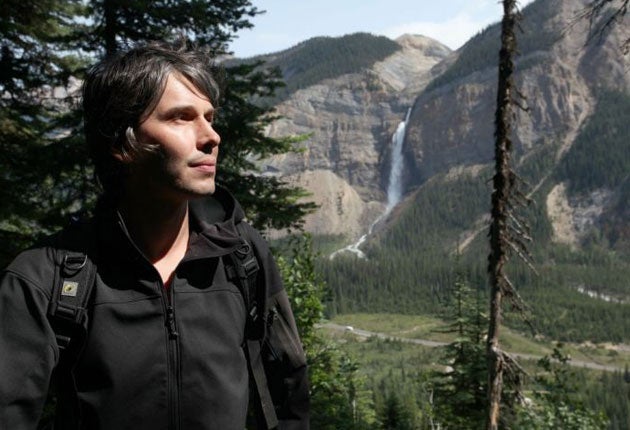Steve Connor: Working out what's real in Brian Cox's vivid universe
Lab Notes

Your support helps us to tell the story
From reproductive rights to climate change to Big Tech, The Independent is on the ground when the story is developing. Whether it's investigating the financials of Elon Musk's pro-Trump PAC or producing our latest documentary, 'The A Word', which shines a light on the American women fighting for reproductive rights, we know how important it is to parse out the facts from the messaging.
At such a critical moment in US history, we need reporters on the ground. Your donation allows us to keep sending journalists to speak to both sides of the story.
The Independent is trusted by Americans across the entire political spectrum. And unlike many other quality news outlets, we choose not to lock Americans out of our reporting and analysis with paywalls. We believe quality journalism should be available to everyone, paid for by those who can afford it.
Your support makes all the difference.I thought for one moment when watching Sunday's Wonders of the Universe that Professor Brian Cox has made a terrible schoolboy error, one that I had once made myself. When talking about the influence of gravity he referred to the "dark side of the Moon".
We can probably thank Pink Floyd for making many of us believe that there is in fact a side of the Moon that is in perpetual darkness. As Cox skilfully pointed out a little later on in the script, there isn't a "dark side" of the Moon, only a side that is permanently facing away from the Earth, thanks to the influence of gravity, and therefore hidden from our view, but not from sunlight.
When I made my first and only reference in print to the dark side of the Moon, in the days before emails, I received a courteous letter from no less than Sir Patrick Moore pointing out my error. It was written with such gentlemanly aplomb that I've kept it as a memento of how to correct someone without anger or ridicule.
Last week I made another schoolboy error after I had read an article by a colleague who talked about nuclear fusion in relation to the Fukushima nuclear plant. I nearly fired off an angry email pointing out that it's nuclear fission, not fusion.
Good job I didn't, because for some totally inexplicable reason later that day when writing about Fukushima I called it a nuclear fusion reactor. It may only be a couple of wrong letters on a keyboard, but the outcome was one of immense embarrassment – for which I have been suitably pilloried.
Criticism should be no bad thing, especially when someone is patently wrong. But praise is also important and Professor Cox and the film makers behind his cosmology series deserve shed loads of the stuff. Who would have thought that it would be possible to explain with such visual clarity some of the most esoteric concepts of cosmology?
Black holes, for obvious reasons to do with the fact that nothing, not even light escapes from them, do not make good visual subjects. It was inspired brilliance to draw an analogy between light and matter flowing towards a black hole with a river running faster and faster towards a waterfall.
To my mind, it was one of the best televisual explanations of a black hole's event horizon, when light can no longer escape, and the point of singularity when all the rules of physics as we know them come to an end. Cox's explanation was truly worthy of Carl Sagan.
However, to cast a small fly in the ointment, the one niggling problem I had when viewing these programmes is feeling a little bit cheated about what I'm actually watching. I constantly found myself asking whether the images I'm seeing are real, computer-enhanced or totally simulated using computer-generated imagery.
We saw images of a supernova and the dusty remains of it in the form of the crab nebula. They seemed to be real. We saw a neutron star, and was told it was taken by the Chandra X-ray observatory, but then switched to images of pulsars, that surely must have been simulated, but no one told us whether they were.
If a news outlet used simulated images, it would have a duty to tell the public that the pictures are not real. So why, I thought, should a factual science documentary series not do the same and take it upon itself to inform its audience about the authenticity of the images being used?
Join our commenting forum
Join thought-provoking conversations, follow other Independent readers and see their replies
Comments